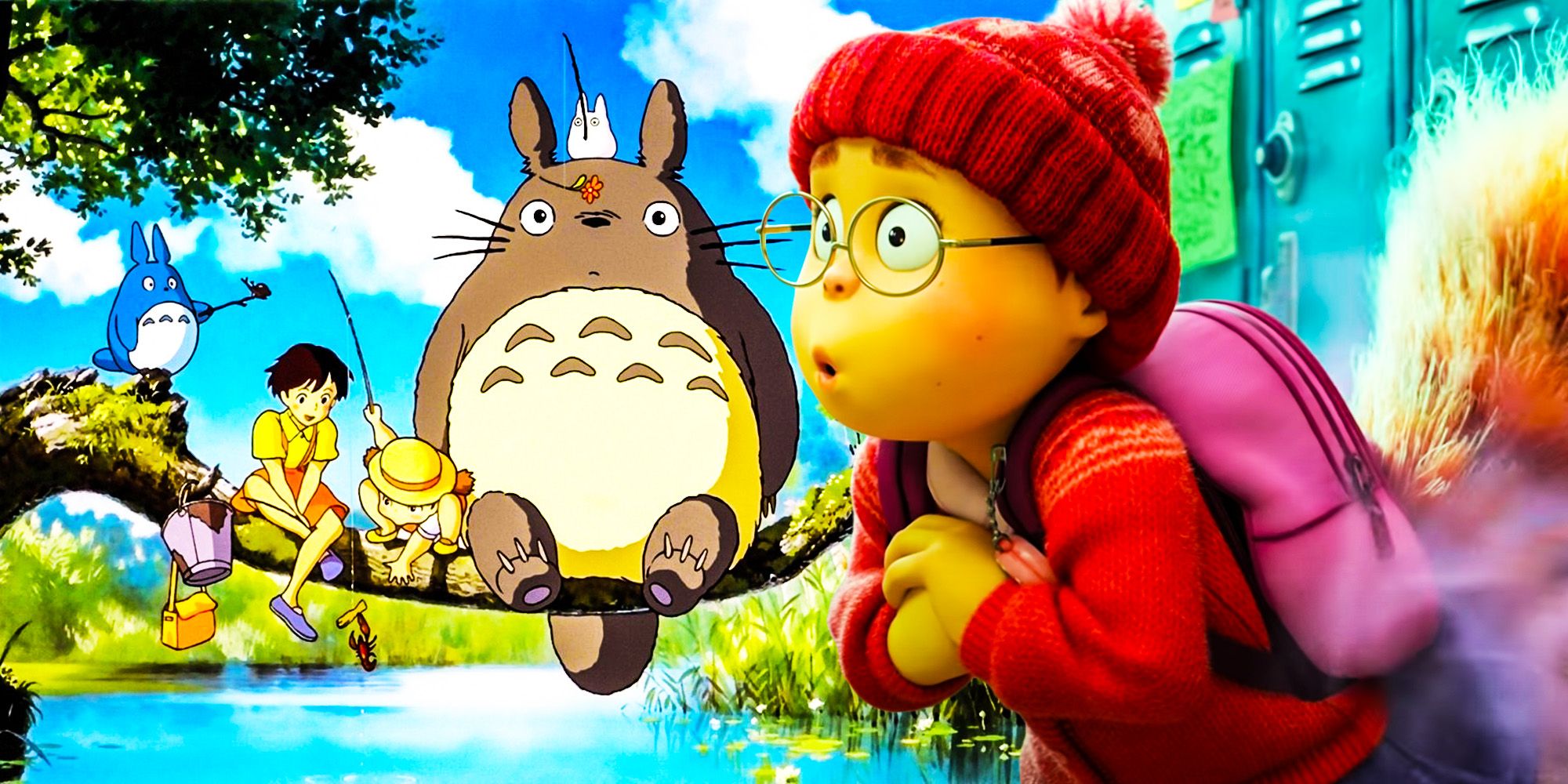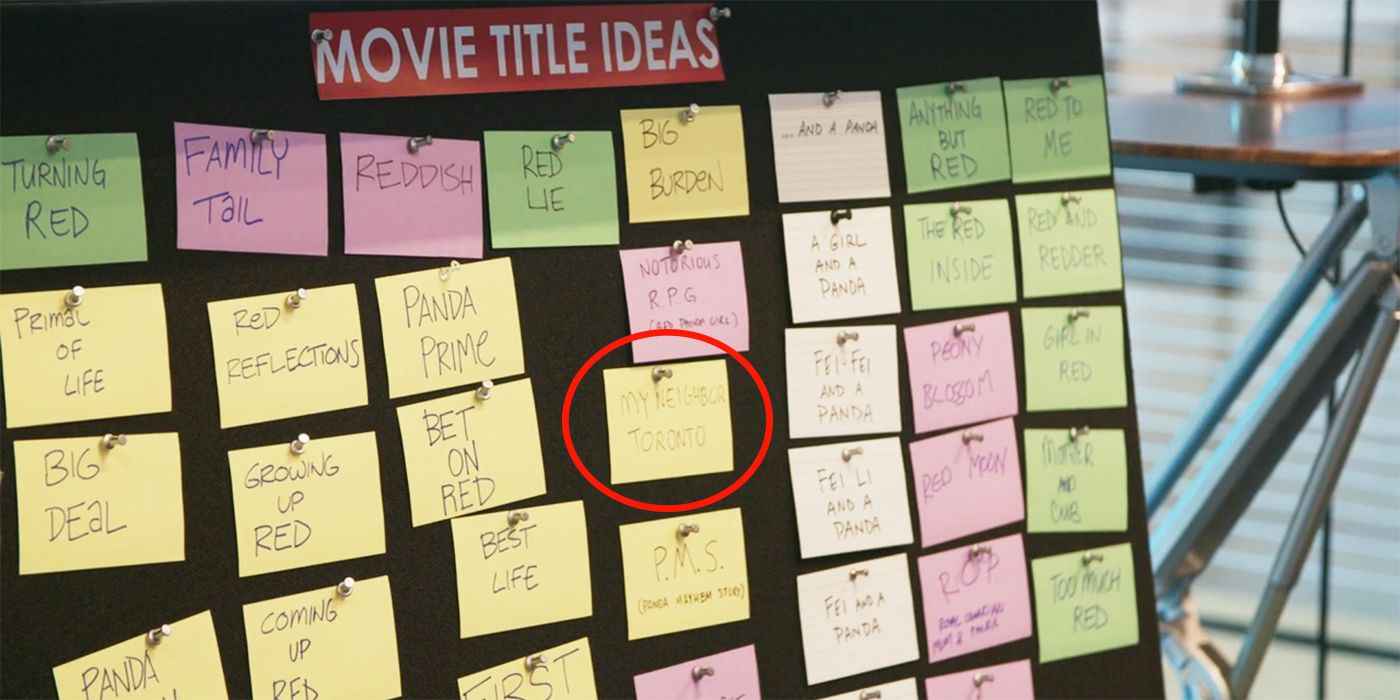Turning Red has been divisive due to how different it is from other Pixar movies, especially visually, and one of its scrapped titles beautifully explains that big difference. Pixar continues to be a powerhouse in the world of animation, and by now everyone knows what a Pixar movie looks and feels like, but the studio has been changing things up a bit in recent years. Its most recent project, Turning Red, has been a critical success but it has also been quite divisive, as it addresses topics that aren’t usually seen in Pixar movies, and its animation style is also different.
Although there have already been Pixar movies with female leads, such as Brave and Inside Out, none had addressed the topic of puberty and all the wild changes that come with it as Turning Red did. Set in 2002 in Toronto, Canada, Turning Red introduces Meilin "Mei" Lee (Rosalie Chiang), a 13-year-old Chinese-Canadian student who one day discovers that, whenever she gets too excited or stressed, she turns into a giant red panda, but she can turn back if she becomes calm and manages to control her emotions. Luckily, this family curse can be contained by performing a special ritual on one specific night – but no so luckily, that night coincides with the concert of Mei’s favorite boy band, and to further complicate everything, Mei also has to deal with her overbearing mother, Ming (Sandra Oh).
Aside from the topics of puberty, menstruation, and generational trauma, what viewers are constantly pointing out about Turning Red is how different it looks from other Pixar movies. Turning Red is heavily influenced by anime, and even though it’s still somewhat loyal to the studio’s visual style, director Domee Shi and her team incorporated many anime elements into it, such as the character’s eyes shining bright when they’re happy or excited, their facial expressions quickly changing, and even the backgrounds are more colorful and detailed. A clear influence in Turning Red's animation style is Studio Ghibli’s movies, and one of the potential titles for the movie was a perfect reference to them: My Neighbor Toronto.
As briefly shown in the documentary Embrace the Panda: Making Turning Red, one of Turning Red’s alt titles was Studio Ghibli-inspired and was a reference to the studio’s classic My Neighbor Totoro, which tells the story of Satsuki and Mei, the daughters of professor Tatsuo Kusakabe, who befriend wood spirits in postwar rural Japan. Among those spirits is a large, gray, fluffy one Mei names “Totoro”, who ends up becoming a protector of the sisters. Ghibli’s movies visually stand out for their use of intricate watercolor and acrylic with vivid colors, a style that impacted that of Turning Red, particularly its colorful and whimsical backgrounds, which made a huge difference from past Pixar movies. Turning Red also has other similarities with My Neighbor Totoro, with both having a giant creature that protects (either the woods, the sisters, or Mei’s family and Mei herself) and their protagonists being named “Mei”, so it’s not surprising that the production team played with the idea of naming the movie "My Neighbor Toronto". In addition to that, Turning Red has been described as a love letter to Canada, so "My Neighbor Toronto" would have brought together the best of two worlds: its Canadian influence and its Studio Ghibli visual influences.
Still, My Neighbor Toronto would have limited Turning Red as the story is a lot more than a Canadian girl in an anime-inspired/Ghibli-influenced setting, and ultimately, the movie’s main theme is puberty, and “Turning Red” is a great reference to that. Turning Red stands out from the rest of Pixar’s movies for the right reasons, and knowing that at one point a title that referenced one of Studio Ghibli’s most beloved movies was considered makes those differences even more special and exciting.


